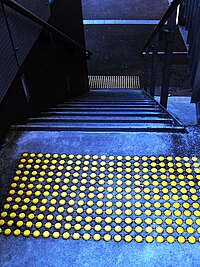
Photo from wikipedia
Abstract Gentle stroking of the skin is a common social touch behavior with positive affective consequences. A preference for slow versus fast stroking of hairy skin has been closely linked… Click to show full abstract
Abstract Gentle stroking of the skin is a common social touch behavior with positive affective consequences. A preference for slow versus fast stroking of hairy skin has been closely linked to the firing of unmyelinated C-tactile (CT) somatosensory afferents. Because the firing of CT afferents strongly correlates with touch pleasantness, the CT pathway has been considered a social-affective sensory pathway. Recently, ablation of the spinothalamic pathway- thought to convey all C-fiber sensations- in patients with cancer pain impaired pain, temperature, and itch, but not ratings of pleasant touch. This suggested integration of afferent A and CT fiber input in the spinal cord, or mechanoreceptive A-fiber contributions to computations of touch pleasantness in the brain. However, contribution of mechanoreceptive A-fibers to touch pleasantness, in humans without pain, remains unknown. In the current, single-blinded study, we performed two types of peripheral nerve blocks in healthy adults to temporarily eliminate the contribution of A-fibers to touch perception. Our findings show that when mechanoreceptive A-fiber function is greatly diminished, the perceived intensity and pleasantness of both gentle stroking and deep pressure are nearly abolished. These findings demonstrate that explicit perception of the pleasantness of CT-targeted brushing and pressure both critically depend on afferent A-fibers.
Journal Title: eNeuro
Year Published: 2022
Link to full text (if available)
Share on Social Media: Sign Up to like & get
recommendations!